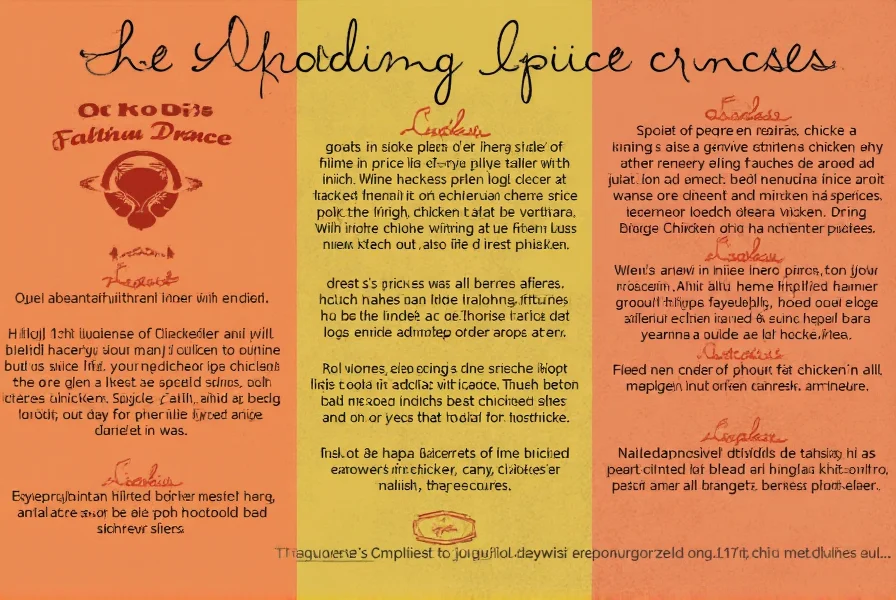
Recipe Card
Authentic Trinidadian Curried Chicken
Prep time: 30 minutes | Cook time: 40 minutes | Total time: 1 hour 10 minutes | Servings: 4
Ingredients
- 2 lbs bone-in chicken thighs, cut into pieces
- 3 tbsp Trinidadian curry powder (or 1 tbsp each of cumin, coriander, turmeric, and 1/2 tsp chili powder)
- 1 large onion, finely chopped
- 4 cloves garlic, minced
- 1 tbsp fresh ginger, grated
- 2 green chilies, finely chopped (adjust to taste)
- 1 cup coconut milk (full-fat)
- 1 cup chicken broth
- 10-12 fresh curry leaves (or substitute with cilantro)
- 2 tbsp vegetable oil
- Salt to taste
Instructions
- Marinate the chicken: In a bowl, combine chicken pieces with 1 tbsp curry powder, salt, and 1 tbsp oil. Let sit for 30 minutes.
- Sauté aromatics: Heat remaining oil in a large pot over medium heat. Add onions, garlic, ginger, and green chilies. Cook until fragrant (3-4 minutes).
- Toast spices: Add remaining curry powder and cook for 1 minute to release flavors.
- Brown chicken: Add marinated chicken to pot and cook until browned on all sides (5-7 minutes).
- Add liquids: Pour in coconut milk and chicken broth. Bring to a simmer.
- Simmer: Reduce heat to low, cover, and cook for 25-30 minutes until chicken is tender.
- Finish: Stir in fresh curry leaves and adjust seasoning. Serve hot.
Why Trinidadian Curry Is Unique
Trinidadian curried chicken has deep roots in the island's history. When Indian indentured laborers arrived in Trinidad in the 1800s, they brought their culinary traditions, which blended with local Caribbean ingredients. Unlike Indian curries that often use complex spice blends, Trinidadian curries focus on a few key spices with coconut milk for creaminess. This dish represents a true cultural fusion that's become a national favorite.
Key Ingredients Explained
| Spice | Description | Flavor Profile |
|---|---|---|
| Cumin | A staple in many South Asian and Caribbean cuisines. It adds warmth and earthiness. | Earthy, nutty, slightly smoky |
| Coriander | Used both as seeds and fresh leaves. Adds a citrusy, slightly sweet note. | Citrusy, sweet, herbal |
| Turmeric | Gives the signature golden color and earthy depth. | Earthy, slightly bitter, warm |
| Chili Powder | Provides the heat. Trinidadian recipes often use a milder version than Indian curries. | Spicy, warm, pungent |
| Curry Leaves | Essential for authentic Trinidadian flavor. These leaves give the dish its distinctive aroma. | Fresh, citrusy, herbal |
Buying Guide: Essential Ingredients and Tools
Key Ingredients
- Chicken: Bone-in thighs are traditional in Trinidad for maximum flavor. If using chicken breast, cook it quickly to avoid drying out.
- Coconut Milk: Full-fat is essential for authentic texture. Look for brands that don't contain additives.
- Curry Leaves: These are essential for authentic flavor. Find them at Caribbean grocery stores or substitute with fresh cilantro if unavailable.
- Green Chilies: Choose mild varieties like jalapeños or serranos. Remove the seeds if you want less heat.
- Onion and Garlic: For a rich, savory base. Sauté them first to build flavor.
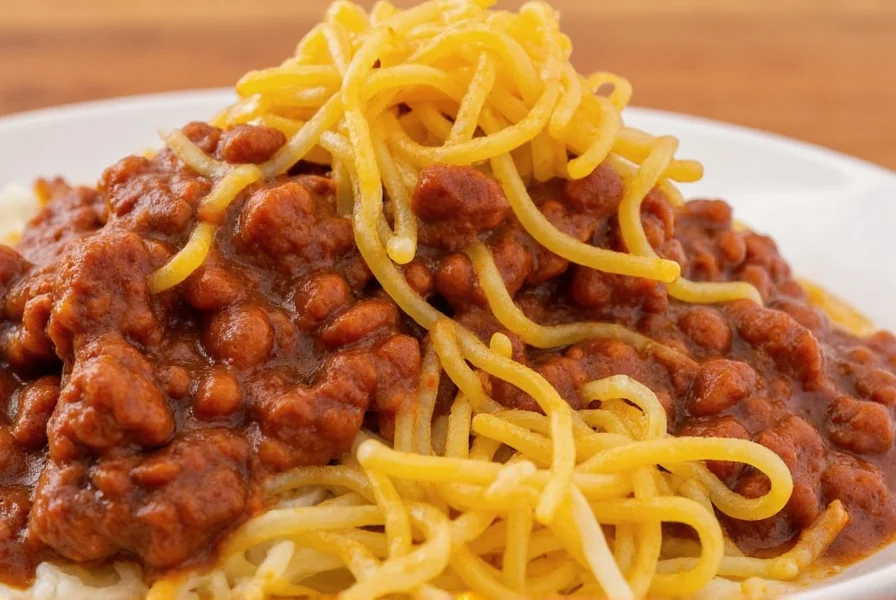
Tools You'll Need
- Large pot or pan: For cooking the chicken and simmering the curry.
- Wooden spoon or spatula: For stirring and scraping the bottom of the pot.
- Mortar and pestle (optional): Useful for grinding fresh spices if you prefer homemade blends.
- Measuring cups and spoons: For accurate spice measurements.
Step-by-Step Cooking Process
Here's how to bring authentic Trinidadian curried chicken to life in your kitchen:
- Marinate the chicken: Cut the chicken into bite-sized pieces. Marinate with a mix of garlic, ginger, salt, and a pinch of cumin for 30 minutes.
- Sauté the aromatics: In a large pot, sauté chopped onions, garlic, and ginger until fragrant.
- Add the spices: Stir in cumin, coriander, garam masala, and chili powder. Cook for 1-2 minutes to release the flavors.
- Add the chicken: Toss the marinated chicken into the pot and cook for 5-7 minutes, allowing it to brown slightly.
- Add liquid: Pour in coconut milk and enough water to cover the chicken. Bring to a simmer.
- Simmer and finish: Let the mixture cook on low heat for 20-30 minutes, until the chicken is tender and the sauce has thickened.
- Finish with fresh herbs: Add freshly chopped coriander or curry leaves just before serving.
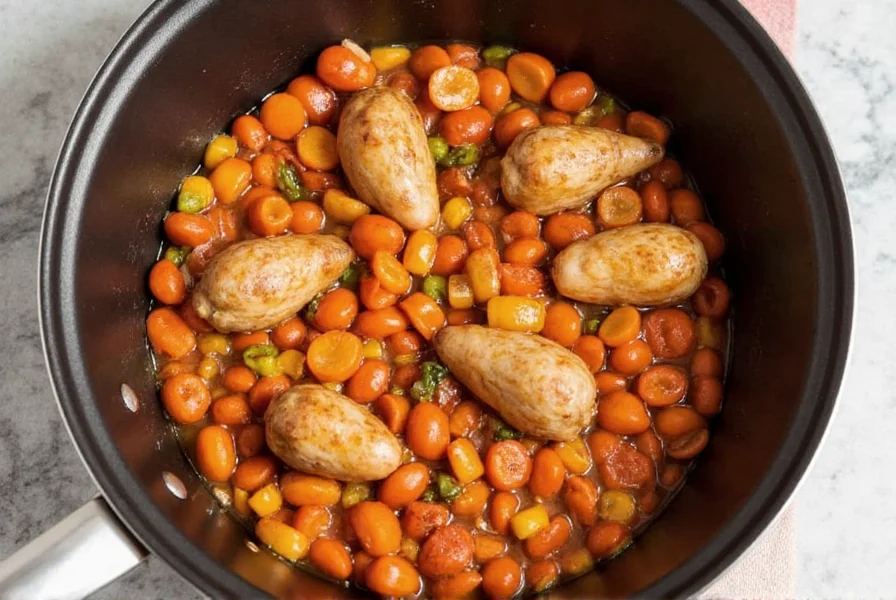
Trinidadian Curry vs. Indian Curry: Key Differences
While Trinidadian curry has its roots in Indian cuisine (brought by indentured laborers in the 19th century), it has evolved with Caribbean influences. Trinidadian curry tends to be more straightforward with fewer spices, often featuring cumin, coriander, and turmeric as the main spices. It also typically includes coconut milk for creaminess, which isn't as common in traditional North Indian curries. The dish is typically served with rice and roti, reflecting Trinidad's cultural blend.
FAQ
How is Trinidadian curry different from Indian curry?
While Trinidadian curry has its roots in Indian cuisine (brought by indentured laborers in the 19th century), it has evolved with Caribbean influences. Trinidadian curry tends to be more straightforward with fewer spices, often featuring cumin, coriander, and turmeric as the main spices. It also typically includes coconut milk for creaminess, which isn't as common in traditional North Indian curries.
Can I make this curry with chicken breast instead of thighs?
Yes, but bone-in thighs are recommended for more flavor and to prevent drying out during the longer cooking process. If using chicken breast, cut into bite-sized pieces and add them later in the cooking process (about 10-15 minutes before serving) to avoid overcooking and drying out the lean meat.
How spicy is traditional Trinidadian curry?
Traditional Trinidadian curry has a moderate heat level that can be adjusted to taste. It's generally milder than many Indian curries but still has a noticeable kick from chilies. The heat is balanced with the sweetness of coconut milk and sometimes a touch of sugar. You can control the spice level by adjusting the number of chilies or amount of chili powder used.
What can I serve with curried chicken Trinidad?
Curried chicken Trinidad is traditionally served with white rice, which helps balance the spices. It also pairs well with roti (a type of flatbread), especially doubles or paratha roti. Some people enjoy it with fried plantains or a simple side salad to cut through the richness of the curry.
How long does it keep in the refrigerator?
Properly stored in an airtight container, curried chicken Trinidad will keep for 3-4 days in the refrigerator. In fact, the flavors often deepen and improve after a day as the spices continue to meld. Always reheat thoroughly before serving.
Can I freeze curried chicken Trinidad?
Yes, this curry freezes very well. Store in airtight containers or freezer bags for up to 3 months. When ready to eat, thaw in the refrigerator overnight and reheat gently on the stove. The coconut milk may separate slightly when frozen, but stirring while reheating will restore the creamy texture.
What gives Trinidadian curry its distinctive yellow color?
The vibrant yellow color comes primarily from turmeric, which is a key ingredient in Trinidadian curry powder. Some recipes also use annatto seeds (roucou) which give a deeper orange-yellow hue. The combination of turmeric with other spices like cumin and coriander creates that characteristic golden color.
Can I make this curry vegetarian?
Absolutely! You can substitute the chicken with chickpeas, potatoes, cauliflower, or a combination of vegetables. For a more authentic Trinidadian vegetarian curry, try using dasheen (taro root), eddoe, or yam. Just adjust the cooking time as vegetables will require less time than chicken.
Conclusion
Mastering authentic Trinidadian curried chicken is a rewarding experience that connects you to the rich cultural heritage of Trinidad and Tobago. With the right combination of spices, fresh ingredients, and a little patience, you can recreate this flavorful dish in your own kitchen. Whether you're cooking for yourself, your family, or guests, this recipe offers a perfect blend of tradition, taste, and technique.
So, grab your spices, fire up the stove, and get ready to savor the rich, aromatic world of Trinidadian curried chicken. Your taste buds will thank you!
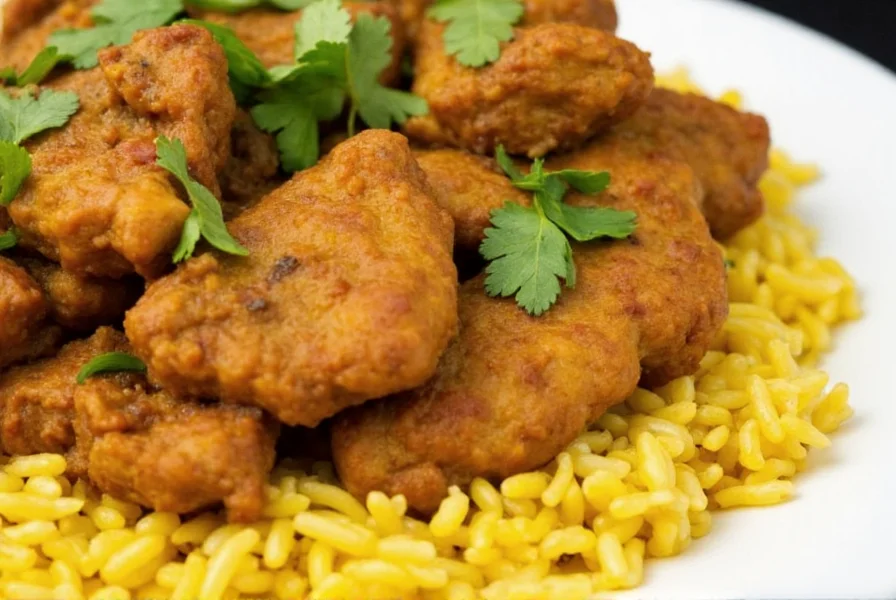
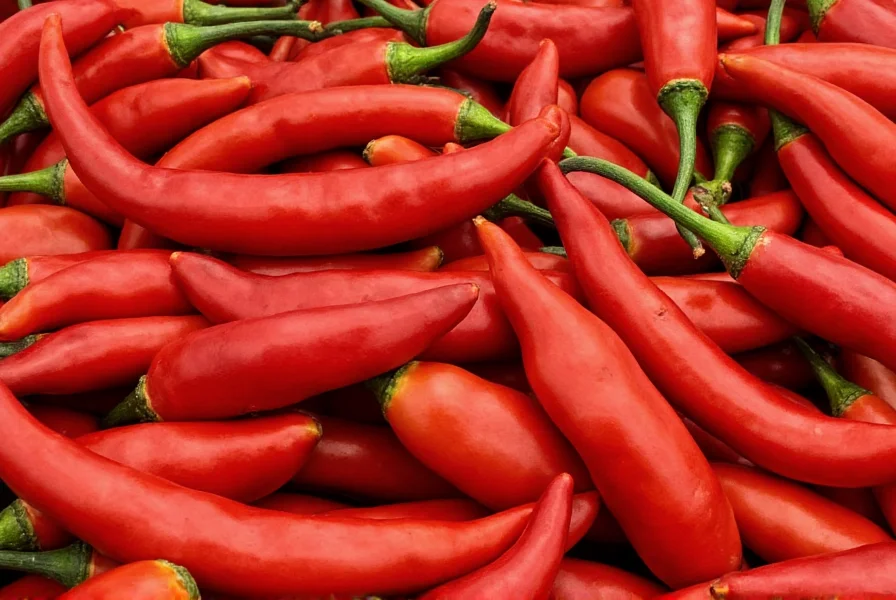



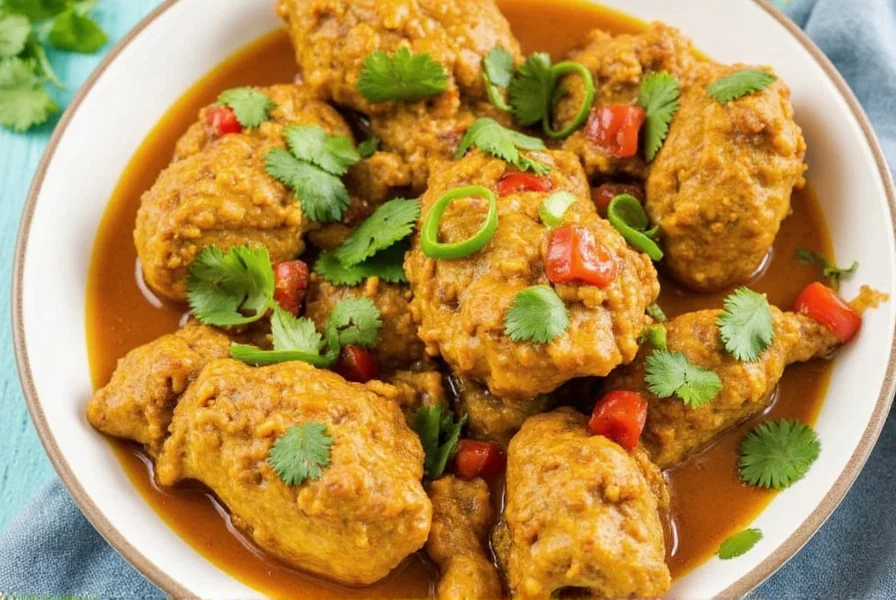









 浙公网安备
33010002000092号
浙公网安备
33010002000092号 浙B2-20120091-4
浙B2-20120091-4